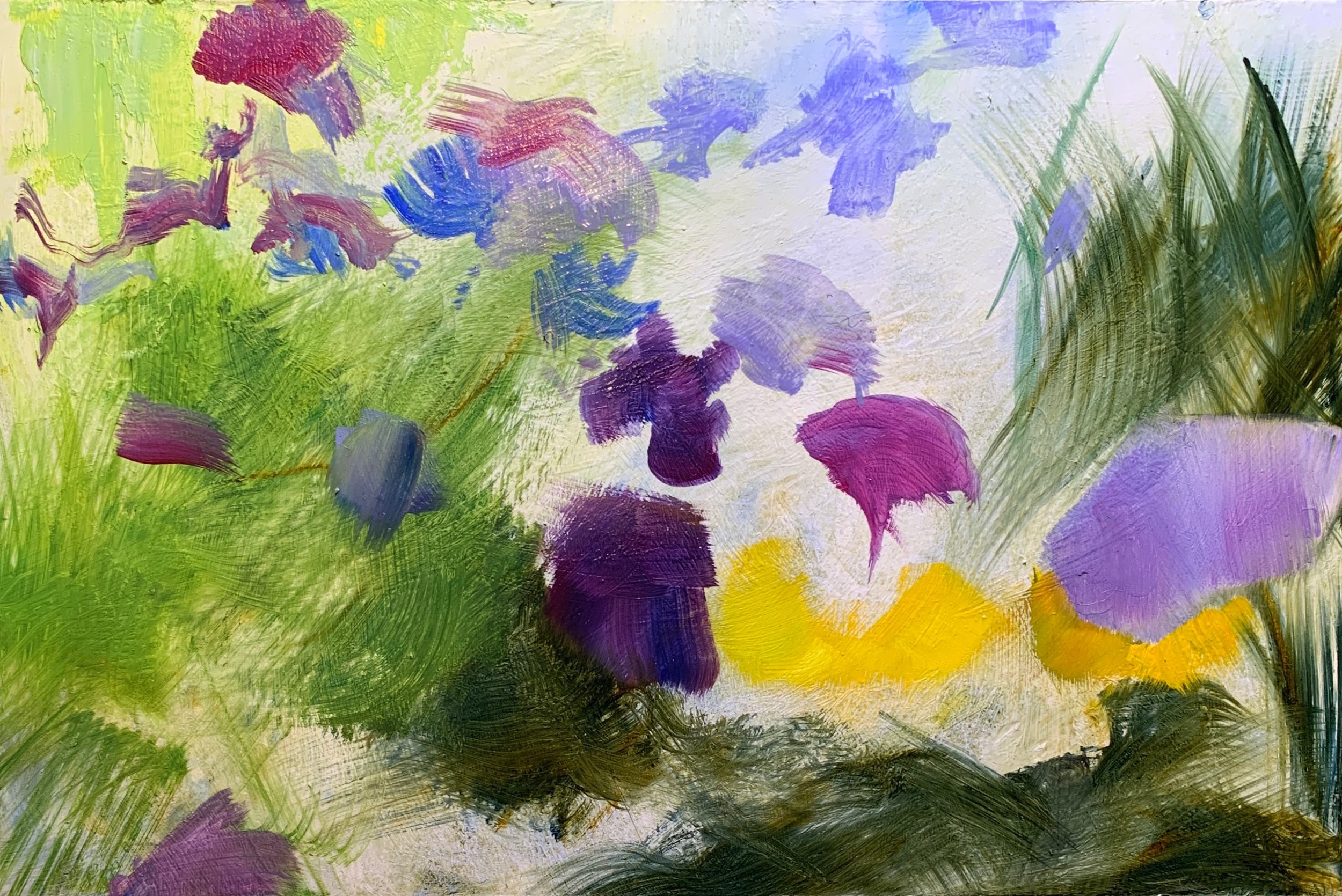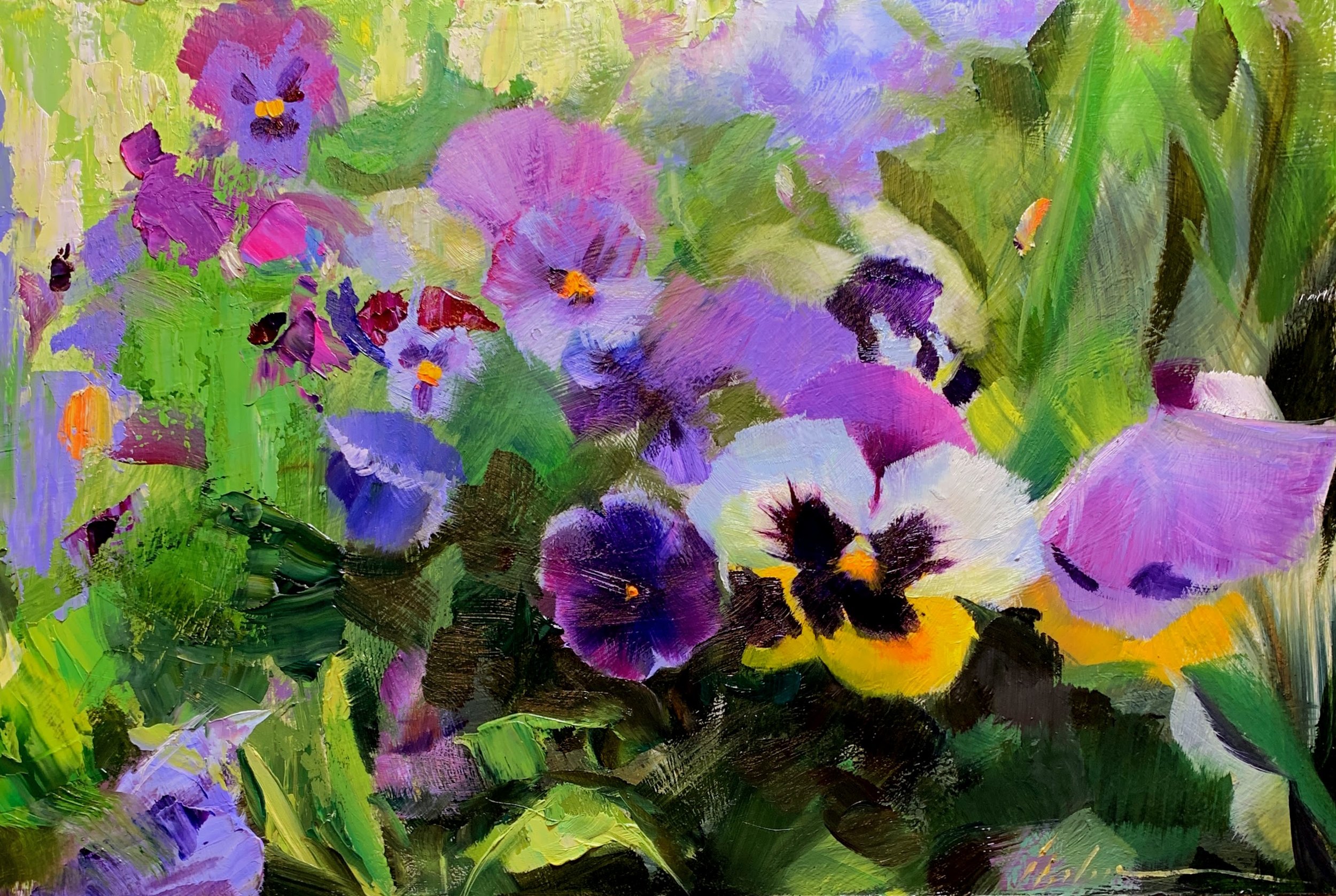The Making of "April Pansies"
The making of this piece began this past winter with a decision to focus on improving my craft. I made a list of masters I wanted to learn from, and set a goal to complete a certain number of master studies. Among them was a gorgeous painting that I had just seen from the master Daniel Keys, entitled “January Pansies.”
Daniel Keys, “January Pansies.” Available at Montana Gallery.
As you can see, it features exquisite color and brushwork, and exudes a painterly energy without losing a keen sense of realism. I was (and still am) enamored with this painting.
You may have seen a photo of my attempt to learn from this piece in earlier blog posts, or on social media. I was pleased at all it had taught me, but as my collection of master studies began to pile up while my stack of new originals stagnated, I began to realize the downside of focusing on this exercise.
These studies, while great additions to my studio walls and a fantastic project to help develop my technique, didn’t exactly seem like a wise business endeavor: those were pieces that wouldn’t drive revenue, and my growing stack of studies might even put off the very artists whose work I was learning from.
It wasn’t until I lined up a show that I decided what to do with this project: take each piece, note the lessons I learned from it, and then compose a new piece that would correspond with it.
The Process
The initial wash…
I began this painting much in the same way I’ve begun all other recent work — just with colors specific to this composition. Using a wash of Ultramarine Blue Deep, Transparent Yellow Green, and Viridian (and perhaps some Cadmium Lemon too) diluted with a generous amount of Gamsol, I roughly brushed everything on until the canvas was fully coated. Then, I rolled my cache of Viva paper towels across the entire surface multiple times to remove excess Gamsol, since it doesn’t dry near-instantly, like turpentine.
Blocking in color
Next came the block in for major color notes to start to establish the composition. Here my paint would have also been diluted with Gamsol, but not to the same extent as the wash. My goal here is to simply let the paint move easily and fill the area where I lay the brush down. By contrast, if I had used the paint straight out of the tube, particularly if I had any white in the mixture, the paint would have been stiff enough to skip over any texture on the panel.
Beginning to refine and render
Now comes the fun part! Here I begin taking my abstract block in and finding the flowers within. I began with the ‘star’ of the composition, the blue and yellow pansy in front. I know it’s going to be the largest item, with the most clear detail and strongest contrast, so I start with it and plan to spend the most time there.
Finally, after the focus point has taken shape, I take a look at any other flowers that could use loose rendering and get out my palette knife for some juicy background color. With the background elements I try to focus on pleasing brushstrokes and daubs of paint rather than a literal depiction of a flower, but when I step back the effect should be the same, and the image should sing out.
The final piece, ready for varnish
Taking a Step Back
This piece didn’t really hit home for me until it was on the wall for my show with Pigfish, but once it was up it really had an impact. As soon as the show opened it was sold.
“April Pansies” up on the gallery wall before the opening





